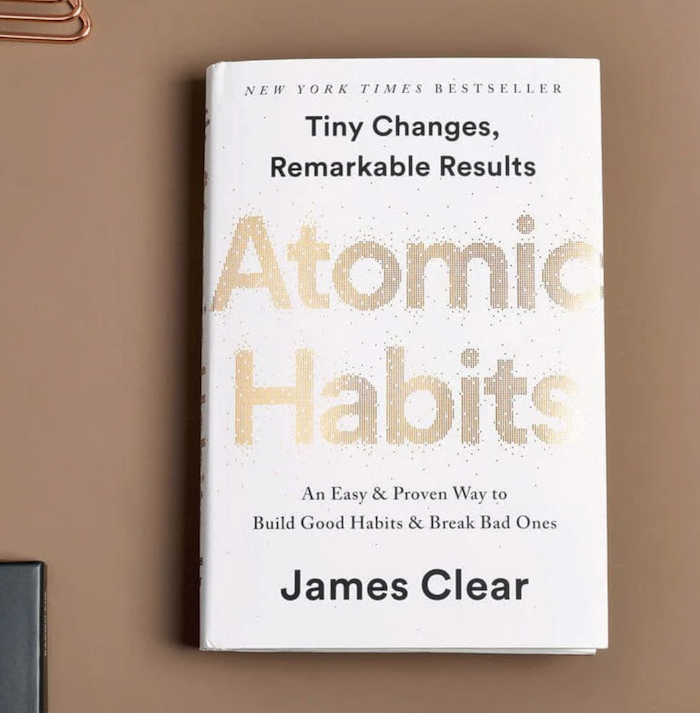“Atomic Habits” is a book by James Clear about making small changes to develop habits that can improve your life. This book emphasizes the importance of focusing on the process of habit formation rather than the end result and offers practical strategies for building habits that help individuals achieve their goals. Clear draws on his personal experience and research from psychology and neuroscience to provide insights on how habits are formed and how they can be changed.
The book is divided into six parts, including a “why” section, four laws (make it obvious, make it attractive, make it easy, and make it satisfying), and advanced tactics.
Fundamentals
The Fundamentals section is made up of three chapters.
Chapter 1 discusses how tiny changes can make a big difference, highlighting that systems are more important than goals.
Chapter 2 explains how your identity is the deeper core from which your habits originate.
Chapter 3 describes how a habit consists of a feedback loop with four steps: cue, craving, response, and reward. These steps can be further divided into the problem phase (cue, craving) and the solution phase (response, reward).
Chapter 3 also introduces the four laws of behavior change and their inversions:
- Make it obvious; inverse is make it invisible.
- Make it attractive; inverse is make it unattractive.
- Make it easy; inverse is make it difficult.
- Make it satisfying; inverse is make it unsatisfying.
1st Law – Make it Obvious
The first law, “make it obvious,” starts with Chapter 4. An important point made in this chapter is the idea of “pointing and calling,” a practice used in Tokyo train stations to reduce train accidents by having staff point and call out certain actions before a train moves.
Chapter 5 introduces “habit stacking,” which is when one habit naturally follows another. For example, making your bed may lead to organizing other parts of your room. This chapter also discusses using the implementation intention formula: I will [BEHAVIOR] at [TIME] in [LOCATION].
Chapter 6 emphasizes the importance of the environment in building new habits or reinforcing bad ones.
Chapter 7 explains how cue-induced wanting triggers old habits and suggests that reducing exposure to these cues can help reduce bad habits. This practice is the reverse of “make it obvious” and focuses on making it invisible.
2nd Law – Make it Attractive
Chapter 8 discusses the role of dopamine, noting that your levels spike in anticipation of a rewarding opportunity. It introduces “temptation bundling,” which combines with habit stacking to build new habits:
- After [CURRENT HABIT], I will [HABIT I NEED].
- After [HABIT I NEED], I will [HABIT I WANT].
Chapter 9 covers herd behavior and its influence on our actions.
Chapter 10 suggests creating a motivation ritual by doing something enjoyable immediately before a difficult habit.
3rd Law – Make it Easy
Chapter 11 states that the number of times you perform a habit is more important than the amount of time spent on it.
Chapter 12 discusses the path of least resistance and priming your environment to make future actions easier.
Chapter 13 introduces the two-minute rule, suggesting you start with very small actions, like taking out the yoga mat, instead of committing to a full 30-minute yoga session.
Chapter 14 recommends making one-time purchases that lock in good behavior.
4th Law – Make it Satisfying
Chapter 15 explains that we are more likely to repeat a behavior when the experience is satisfying.
Chapter 16 discusses habit tracking as a way to maintain progress.
Chapter 17 suggests having an accountability partner to stay committed to your habits.
Advanced Tactics
Chapter 18 uses Michael Phelps as an example of the power of consistent habits.
Chapter 19 discusses the Goldilocks Rule, which states that humans experience peak motivation when working on tasks that are just right—neither too easy nor too hard.
Chapter 20 advises maintaining a small, flexible identity to adapt to new habits.
Conclusion
The conclusion is that small, atomic habits can make a big difference over time.
My Summary: Overall, I liked this book. To be honest, I skimmed some parts of it (like the stories/anecdotes at the beginning of each chapter), but some concepts like habit stacking, small flexible identity, and the notion of cues/environments that help form good/bad habits are useful to me in everyday life. I think the book is a good read for anyone who wants to improve their habits.


Leave a Reply